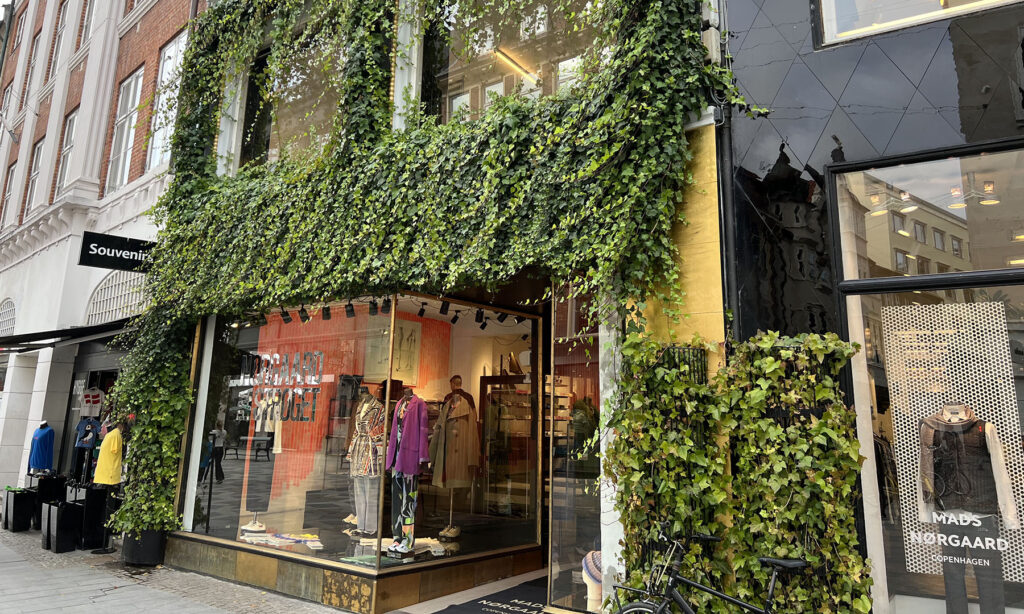“Climbing plants: the forgotten solution to the climate problem”. The baseline of climbing plants nursery van der Starre sounds modest. But make no mistake. If it were up to Bart and Teun van der Starre, facades in cities and on businesses would soon be compulsorily coloured green. And rightly so. Together with them, we zoom in on the many-headed advantages of climbing plants.
Slowly moving up
Founder Bart van der Starre looks back to the very beginning in 1982. “My father worked in engineering and I soon knew I wanted something else. I went to horticultural school and by the time I was seventeen I had seen enough of that. Working for a boss didn’t suit me and so I started working for myself at nineteen.” A process of trial and error where he says he did everything wrong you can do wrong. Two years later, cousin Bert joined.
In the early 1990s, the nursery was forced to relocate. From one hectare it suddenly went to three and a half hectares and a, for the time, state-of-the-art farm. “We were the first company to recycle leaking water. That way no crop protection agents got into the surface water. We were also pioneers within the industry in an ebb and flow system.”
Pioneering in sustainability
Today, the nursery spreads over 20 hectares. But the green concern has remained. Van der Starre is a pioneer rather than a follower. Since 1 January 2023, for instance, they no longer use chemical crop protection. “We have been reducing our chemical control for years,” Bart explains. “In 2023, we decided to switch completely to green crop protection. A tough year because we had been plagued by fungi for a long time. But we succeeded. So it can indeed be done without chemical control.”
Blood, sweat and tears it cost them. But how do you prove it to the customer and the end consumer? It had to be embedded in an official certificate, which is why the van der Starre brothers knocked on MPS’ door. Bart: “Together with Tuinbranche Nederland, Intratuin, PAN Nederland, Stichting Natuur en Milieu, we developed a new certificate with MPS that also included monitoring. The MPS Greener Grown certificate takes effect from 1 January 2024 and works with a three-star system. This gives growers the opportunity to gradually switch to natural crop control. To make the certificate even more decisive, inspections will take place up to six times a year.”
Besides MPS Greener Grown , van der Starre is also certified with MPS A+, MPS GAP and MPS Productproof and GRASP. The company also makes efforts in other areas to minimise its ecological footprint. Bart explains a few examples: “We use as little energy as possible. Our plants can withstand a bit of frost, but in winter we prefer to put them in the greenhouse for safety’s sake. Here we only heat at a temperature of -3 C°. That used to be 2 C°. By heating below zero, we now save up to 90% energy. We also drive electric cars as much as possible. Especially for the English market, we grow peat-free. All pots are made of 100% recycled Post Consumer (PP NIR scannable) material, the same for our photo labels that can be recycled together with the pots.”

Climbing plants as a solution to climate problems
So the climbing plants are grown sustainably, but the most ecological lever is the climbing plant itself. Or the forgotten solution to the climate problem, as they describe it themselves. The pet project of son Teun van der Starre, who takes over the conversation. “Climbing plants play a crucial role in greening cities. Even more important than trees. After all, research shows that climbing plants absorb much more CO2 and release O2 per m2 than any tree. Not to mention particulate capture, water uptake, temperature regulation and biodiversity.
This research, conducted by Delft University of Technology, is ongoing and we are supporting it. This is how we link forty years of cultivation experience to scientifically based knowledge. You can plant trees, but that costs money and they take up a lot of space. Whereas, climbing plants are cheap and easy to plant. Moreover, they are beautiful. Just think of the green garlands in cities like Ghent and Antwerp.”
Green facades as a mandatory part of buildings

“To encourage ground-mounted climbing plants as green facades, we have developed the concept of ‘UrbanClimbers’. Here, we supply climbing plants and structures for vertical greenery against buildings. Our ambition? For green facades to be compulsorily incorporated into building design. Meanwhile, we work with architects, governments, horticulturalists and so on. We participate in the design phase, supply specially developed racks, advise on soil improvement, fertilisation and maintenance. And above all: we advise which climbing plants are most suitable. Not one species, but several together so that the soil remains healthy and biodiversity increases.”
A green world always starts with yourself. They also translate the knowledge van der Starre gains from the UrbanClimbers concept to the customer. Especially for garden centres, they have developed ‘Climby’s’. Via cartoons on the labels, they map out the advantages of a particular variety. The consumer sees at a glance which climbing plants best suit their garden and their needs.”
Working with quality companies like Floréac
The short line with customers was important to van der Starre from the very beginning. “When I started forty years ago, climbing plants were sloppily presented in garden centres,” says Bart. “That’s why we carefully develop concepts that present our plants attractively in retail. Quality always comes first. That’s also why it clicks so well with other partners like Floréac. You recognise the same drive. We have been working together for about ten years now and we have a very good understanding of each other. Together, we look at how we can optimise the whole process right up to the customer’s shelf. Especially in the busy season.”
CO2 positive into the future
To conclude. Why do Bart and Teun go to the nursery every day with tons of energy? “Because we have the best job there is. We are one of the few sectors that are CO2-positive. Because we provide green lungs and thus care for the future of the current and especially the next generation.” Teun agrees: “I dare to say we hold the key to greening cities. And that in an efficient and cheap way. Because you can’t plant trees everywhere, a climbing plant can, in principle. And you’ll be fine for at least 50 years.”
